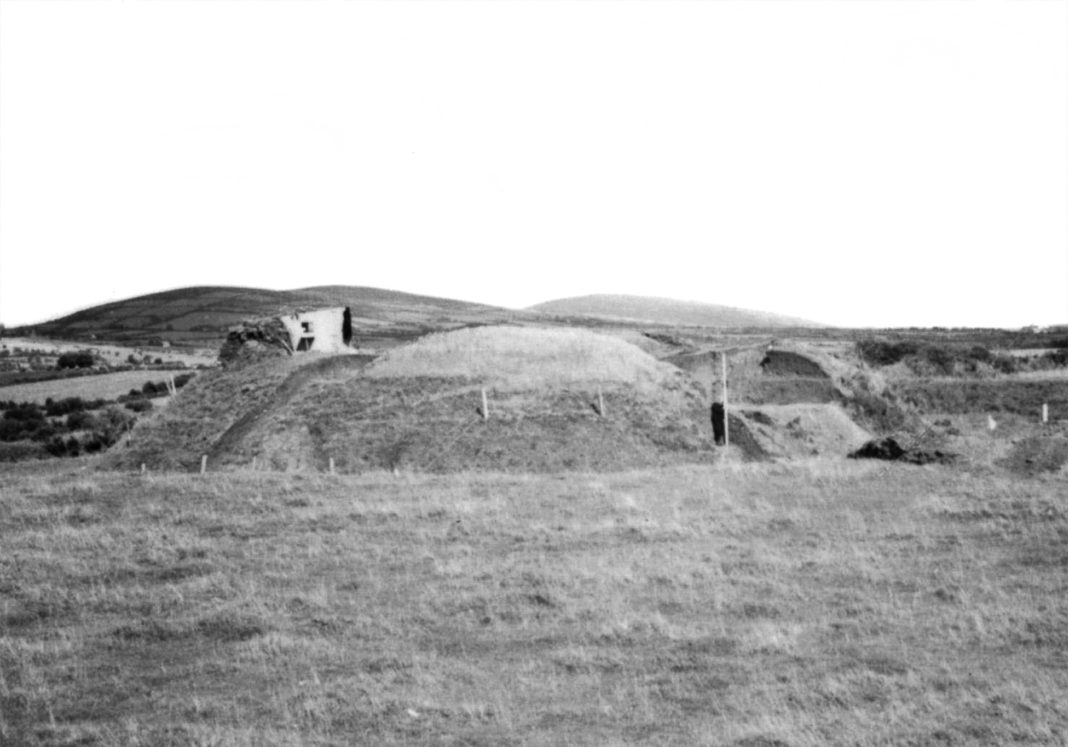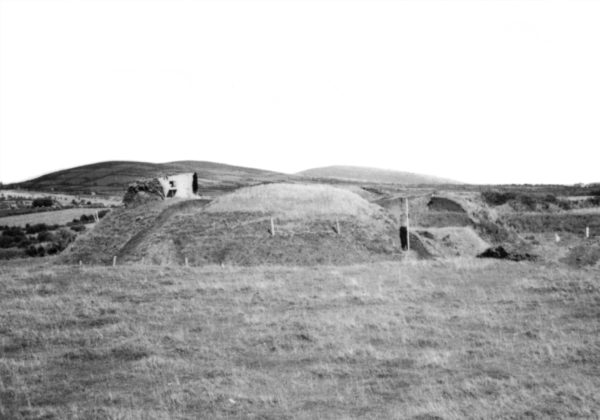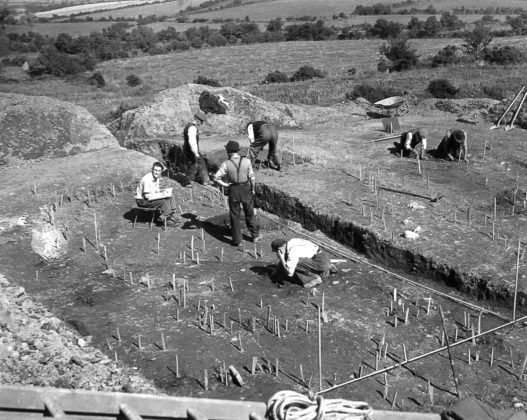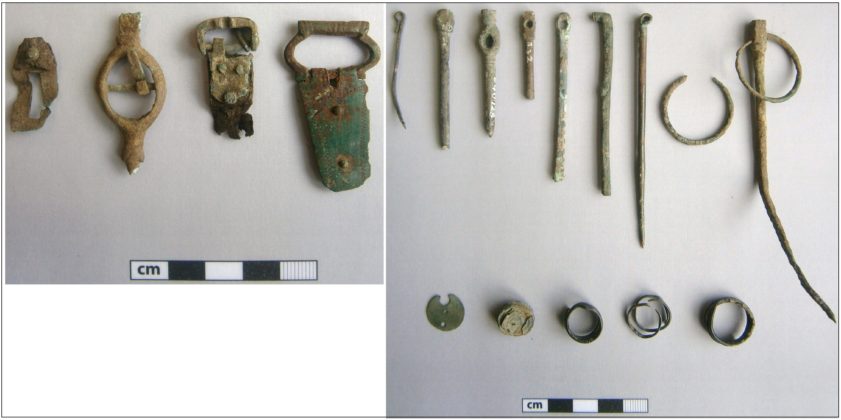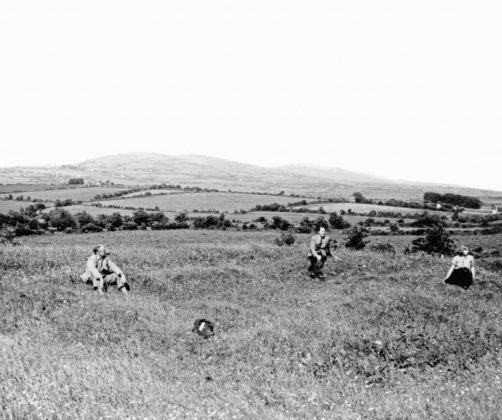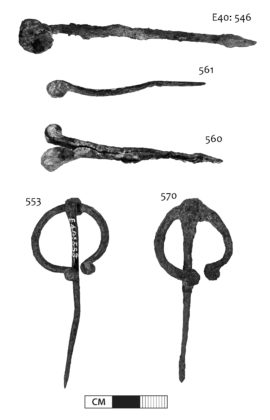Excavations by John Hunt 1949 -51
John Hunt, of Hunt Museum fame, had developed a keen interest in archaeology, participating on different excavations including the famous Lough Gur excavations with Séan P. Ó Ríordáin, Professor of Archaeology in University College Cork, and in 1949 decided to excavate what was thought to be an Anglo Norman motte. This was located near Ballylanders in Co. Limerick in the townland of Ballingarry at the north-eastern foothills of Slievereagh.
The work continued over three summer seasons, culminating in 1951 with the near-total excavation of this impressive monument. Hunt was intent on publishing Ballingarry and had been amassing information, correlating his results and collaborating with specialists until at least 1966, but unfortunately his excavation at Ballingarry remained unpublished with his death in 1976.
The Department of Archaeology in University College Cork subsequently acquired the site archive. Some analysis of the excavation was then undertaken by a postgraduate student, Geraldine Critchley, however a final site report was not prepared. In 2001 the importance of the site was highlighted by the Heritage Council’s survey of unpublished excavations from 1930-1997. The monument was included as a Category 1 site, being of national importance, due to its potential to give insight into different phases of building. The survey demonstrated the necessity for an analysis and write up of the excavation archive.
As part of an MA in Archaeological Excavation undertaken by Gillian McCormack with the Department of Archaeology in UCC, she undertook the task of writing up the unpublished excavation to reconstruct the site history and to disseminate the significant results to the public. On completion of her MA, she was funded by UCC’s Department of Archaeology to further research the site and to bring her research to publication, which resulted in a book presenting Hunt’s original findings, combined with some of her own re-interpretations, an analysis of the 600 plus artefacts discovered and an analysis and contextualisation of the results of the excavation, at a local and national level. For the first time, the public were afforded access to the original site photographs, illustrations and correspondence.
To coincide with Heritage Week event in 2018, and to mark Gillian’s publication of John Hunt’s (of the Hunt Museum) excavations from 1949-51 at Ballingarry ringfort, an illustrated talk, book launch and guided tour of the ringfort organised in conjunction with the Department of Archaeology UCC, took place in August at Glenbrohane Community Hall, near Ballylanders.
“It was an amazing journey, from first delving into the box with old notebooks full of Hunt’s notes, maps and artefacts (nearly an archaeological discovery in its own) to trying to locate 500 missing artefacts to analysing and researching the excavation, to finally working with some of the locals in Ballingarry who remembered stories and yarns about the site and the excavation all those years ago”, Gillian commented in advance of the Heritage Week launch.
The following is an outline of the findings.
RESULTS OF THE EXCAVATION
The analysis of the archival material from the excavation at Ballingarry revealed it was not an Anglo Norman motte, as had been originally thought, but actually a platform ringfort. It was a multi-period settlement that had grown to its impressive height during the early medieval period (c.5th-early 12th century AD) and was reused in the Anglo-Norman (1169-1350 AD) period. Some evidence for prehistoric activity was also recovered from the site, indicated by preshistoric pottery sherds from the Late Neolithic and Bronze Age.
The ringfort itself had three periods of continuous settlement, possibly from the fifth to the eight centuries AD. This culminated in the creation of a large mound (reaching a height of between 2.15-2.90m, with a diameter of 22.5×18.9m), its summit enclosed by a wooden palisade and the whole structure enclosed by bivallate defences. This period seems to have been an important settlement in the local Déis Deiscirt kingdom. The site was later occupied by Anglo-Normans during the late twelfth and thirteenth centuries, possibly as a manorial residence within Griffin de Rupe’s feudal barony.
Ballingarry was an important settlement indicated not only from its impressive height and defences, but also from its array of artefacts which indicated the occupants were wealthy inhabitants. These included elaborate metalwork, such as ringed pins and a copper alloy ring-brooch, together with decorated bone combs and sherds of imported pottery like the possible Late Roman amphora and Samian ware, as well as medieval Rouen ware and coins of Edward I. From the evidence of the artefacts and the evidence of circular and rectangular wooden houses, we know the inhabitants were involved in dairy and/or tillage farming and conducted various craft activities on site, including copper alloy and ironworking.
ONLY HIGH PLATFORM RINGFORT EXCAVATED IN THE REPUBLIC
Ballingarry is an important site in the archaeological record of Ireland due to its excellent preservation of these occupational features and artefacts and it also gives us insight into the different phases of building of a ringfort. Ballingarry comprises four of the major types of ringforts in Ireland: univallate (one bank and ditch encircling the site), raised, platform and bivallate (two banks and typically one ditch enclosing the site). It is also the only high platform ringfort to be excavated in the Republic of Ireland, the majority of these excavations have occurred in the North East of the island in Antrim and Down, and is vital for our understanding of regional variants.
Ringforts were enclosed settlements and farmsteads of the early medieval period, with the majority dating 500-1000 AD. They are the most numerous of Irish field monuments, anything from 26,000 to an estimated 45,000. Raised and Platform ringforts are early medieval monuments, with artificially elevated interiors enclosed by an outer ditch and sometimes re-used as Anglo-Norman mottes.

